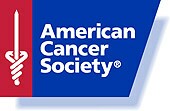
THURSDAY, April 11 (HealthDay News) — When it comes to cancer prevention, the latest report from the American Cancer Society offers mostly good news but some bad news as well.
Cigarette smoking rates continue to drop, with significant declines seen in high school-aged smoking. But, in response to the now ubiquitous smoke-free areas in most public spaces, cigarette companies upped their marketing for smokeless tobacco products by nearly 120 percent, according to the report released Thursday.
“We’re making progress, but we need to keep an eye on the needle to see where the whole front of risk factors is, and how we can put out the best policy to face the ongoing challenges,” said Vilma Cokkinides, strategic director of risk factors and screening for the American Cancer Society.
The annual report focused on tobacco use, obesity, nutrition and physical inactivity, ultraviolet radiation and skin cancer, the cervical cancer vaccine and screening tests.
Findings from the tobacco front were mostly positive. Cigarette smoking in American adults declined slightly, from nearly 21 percent to 19 percent between 2005 and 2011. Rates in men dropped from nearly 24 percent to 21.6 percent, and for women, the prevalence of smoking went from slightly over 18 percent to 16.5 percent.
One of the most positive signs in tobacco use was the drop in high school students. In 1997, more than 36 percent of these students smoked. By 2011, that number was cut in half to just above 18 percent, according to the report. About 13 percent of high school students said they smoked cigars and nearly 8 percent used smokeless tobacco.
“One of the most effective ways of stopping children from smoking is price,” Cokkinides said. And, one way to raise the price of cigarettes is through taxes, which vary widely from state to state. Missouri’s excise tax on a pack of cigarettes is just 17 cents per pack, while New Yorkers pay $4.35 per pack.
Even with tax revenues and settlement agreements, Cokkinides said that the “tobacco industry continues to outspend us.”
Another area where industry is suspected of luring in young people is the indoor tanning industry.
“The industry makes young people believe that indoor tanning is safer than outdoors. The image is very strong, and the most vulnerable populations are young women, but we’re beginning to address this through access restriction policies and laws,” Cokkinides said.
Thirty-three states have enacted legislation that restricts minors’ access to tanning facilities, according to the report. Using a tanning booth during your teens and 20s can increase your melanoma risk by 75 percent.
The report also found increasing numbers of young women getting vaccinated with the HPV vaccine, which can prevent many cervical cancers. Rates of mammograms to screen for breast cancer remained relatively stable. Slightly more than four out of five women received Pap screening according to the recommendations, with the exception of women without insurance and those with low education. Colorectal cancer screening rates were also lower in people without insurance.
“There’s hope that the Affordable Care Act will help improve access, especially for those without insurance, but it’s really going to depend on the state-by-state implementation of the act,” Cokkinides explained.
The report also looked at obesity, nutrition and physical inactivity. All of these factors can affect cancer risk. The rise in obesity appears to have slowed down, and possibly even plateaued. However, about 36 percent of adults and 18 percent of teens are already obese. The prevalence of obesity varies widely by state, with Mississippi having the highest rate at 35 percent. The lowest was Colorado at about 21 percent, according to the report.
One expert discussed the obesity-cancer connection.
“Over 116,000 cancers can be prevented every year if more Americans stay lean. It’s not a silver bullet, but preventing obesity can help prevent cancer,” said Alice Bender, nutrition communications manager at the American Institute for Cancer Research.
Bender said that right now, only about half of Americans are aware of the link between obesity and cancer. There are seven cancers that have good evidence linking them to obesity.
And, a healthy diet with lots of fruits and vegetables can decrease the risk of cancer, as can regular physical activity, according to Bender.
“We’re making progress with smoking, but it took years of education and changes in indoor environments that made it harder to smoke. Now, the message is that staying lean will lead to healthier outcomes,” Bender said.
“I think this report shows that people are becoming more and more aware that cancer doesn’t have to happen all the time,” she noted. “There are things we can do to reduce our risk.”
More information
Learn more about cancer risk factors and what you can do to prevent cancer from the U.S. National Cancer Institute.

